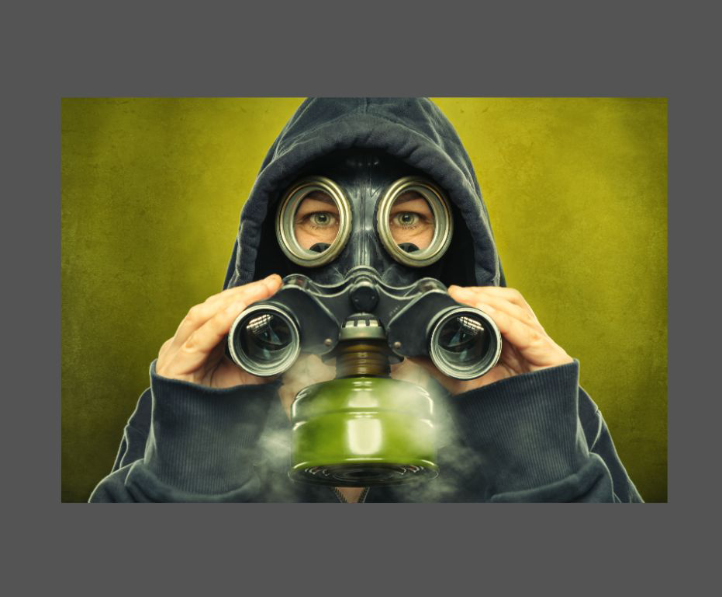Meta-consciousness and Meta-community
We have spoken in recent blogs about meta-consciousness, a level of self-awareness that is expansive enough to recognize self outside of normal time and space limitations. For example, I may begin to identify myself with my being that existed before conception, or in past lives, or in parallel lives, or to identify with possible future selves. I may begin to identify self holistically, recognizing the role of the sociopolitical and environmental milieu in the self’s identity. I may begin to experience self relationally, i.e., we, as human beings, grow and develop through relationship and not in individual vacuums of experience. I may identify as an extended self, which includes all of the ancestors, the yet unborn, all of nature, and the entire community. I may begin to recognize myself as community, as a collective of selves within. These tend to be feminist, Afrocentric, and indigenous perspectives.
To the extent that we identify through such a meta-conscious worldview, our relationship in community begins to change. We move away from what Martin Buber (1958) called “I-It” relationships and more toward “I-Thou” relationships. No longer relating to others (be they human beings, animals, trees or stars) as an “it”, an object to use, manipulate, attract or avoid. Rather, relating to the other as an autonomous, sacred relative.
What Can We Do to Promote Conscious Meta-community?
I am reminded of a particular shamanic training we participated in; it was in Mexico in 1999. It was very powerful since every part of it was a learning experience. During this training, a woman guest at our isolated hotel, unknown to us, drowned in the ocean. She had been swimming alone on a part of the beach that has very strong riptides. That evening, we could feel her soul “wandering around” along the beach seemingly very confused. A few people picked up on the situation where, on some level, she had come to Mexico at the same time we were there, alone at Christmas time, in order to die. Of course we will never know that for sure. We did a ceremony and prayers to encourage her soul to go to the light and to be in peace. It was a powerful learning experience since working with discarnate beings is certainly a part of the shamanic tradition. Many people are working with hospice clients and have the same opportunity to assist them into the light.
We were taught about the different levels of shamans and the different developmental stages that they pass through as teachers and healers. We had the good fortune to spend time with two different native shaman healers and to experience their culture, traditions and healing techniques. Both were very different and we learned from each. One, a beautiful old woman named Dona Adalida, is an amazing healer, a teacher to Carlos de Leon. The other, a young Huichol man, introduced us to the traditional rituals of his people. We sift through the traditional methods and take what works in our culture. This first level of shamanic teachings incorporated chakra work, Chi Gung, energy work, transpersonal psychology and learning to “see” on many levels.
We lament the fact that so many native healers have been lost to Westernization. Yet it is now up to us to learn as much as we can and to carry on the healing light. I see so many of you who have grown immensely through your dedication to your own work through Internship programs, Personal Transformation Leadership Trainings. And of course our Mentor’s program. There are PTI groups going on around the country where people are receiving the healing that they could never get in the mental health delivery system. The Wellness community is strong and healthy, a collective of “I-Thou” relationships. And one of the foundations of maintaining a healthy community is our communications with each other.
How do we develop and maintain Conscious Communication?
Is it Human Nature to Gossip? No. It is human nature to want to communicate, to learn knowledge and to be included. However, in communication there are healthy productive patterns and unhealthy non-productive patterns. We learn communication styles in our families and peer groups from a very early age. For example, in some families children are taught to triangulate rather than to talk directly to each person. A mother who acts as a go-between for the children and their father is teaching triangulation. She may say, “Now children, don’t bother your father. He's tired. Just come and tell me and I'll talk to him for you.” Or parents may say things to devalue other family members in front of the children. “Don’t talk about that in front of your mother, she’ll have a nervous breakdown. Let's you and I go get an ice cream and we’ll leave her to sulk by herself.”
Triangulation in communication is a result of family victimization patterns. So in the above statement, the father is playing the rescuer of the child, while naming the mother as the victim. In so doing, he is also persecuting her. The child at first is seduced by this game in wanting to be “on the father’s side.” There is a subtle bonding that happens when the game of “two against one” is played. But later on, the child will feel sorry for the mother and may play the same game in reverse against the father. Children are often used as pawns in the battles of the parents. And this communication pattern is indelibly recorded in our brains and carried into our adult lives.
In families where there are many children, all kinds of triangulation and gossip patterns are formed. Sometimes the triangles are among the children against each other and sometimes they are against the parents. Sometimes the triangles are formed in the immediate family against aunts, uncles or neighbors. The sides that people take against each other can change from situation to situation or can be a lifetime pattern. One family I worked with is an example of the lifetime pattern of triangulation. The son was on the mother’s side against the dad and sister. The daughter was on the father's side against the mother and brother. The parents created this situation by each claiming “their own child” and then grooming that child to form an alliance against the others.
Another motivation for triangulation or gossip is jealousy, especially among sibling groups. Families where parents are emotionally or physically unavailable and there is intense competition for attention breed gossip, backbiting and undermining each other. This is fertile ground for the types of unhealthy communication we are discussing. The children will start rumors or tell lies or tattle about each other to try to put the others in a bad light and to try to put themselves in a good light. An example is a young boy who was one of four brothers who left his parents a note one night after they had been out to a social event. The note said, “the others stayed up past curfew and were fighting with each other. I went to bed on time.”
Another common pattern in destructive communication is “make-wrong thinking.” This is a pattern of triangulating against another person by “gathering evidence” against them to judge them and make them wrong. When people engage in this type of communication, they are usually “plugged in” to some of their own issues, feeling defensive, and are attempting to recruit others to their side. They are usually blaming someone else for their own behavior or experience.
Gossip is destructive in all situations, but especially in families and groups. It undermines trust, circulates negativity and supports fears. So in conscious community, we must learn to communicate in the most direct and healthy way.
We can learn to differentiate between secrecy, privacy and confidentiality. Secrecy is motivated by shame. However, it is healthy and legitimate to want to keep some information about your life private. When you tell someone something about yourself, be sure to let him/her know if you want it kept private. When people tell you something about themselves, ask them who you can share it with. If you feel you are being drawn into a triangle of communication, point out that you do not like to be in the middle of two people you love. If someone tells you something that feels uncomfortable, practice saying, “This is more than I want to know about this, please don't say any more.”
Gossip can be very seductive. Don’t let yourself be seduced into destructive communication patterns. You can meet your natural needs to communicate, to learn about others and to be included socially, and remain in integrity with your communications.
Observations and Reflections on Our Meta-community
I have spoken with many people over the past few weeks about how they are using hypnotherapy in the field. One woman told me she is using it with adolescent boys in a drug and alcohol rehab school. She reported that the first boy she worked with was able to stop using alcohol with hypnotherapy sessions. The word got around and she now has kids lined up at her door waiting for their turn. It also helped the administration to open up to the treatment benefits of Heart-Centered Therapy.
A woman who works with Americorps uses the hypnotherapy with homeless and other disadvantaged people. As she was thanking me for this work and telling me how much it had helped her people, I had tears of gratitude for her.
One of our therapists from South Africa sent me an email thanking me for the process which helped his client release migraine headaches. Another man from South Africa is using hypnotherapy to help heal a client who was in a very bad car accident and couldn’t remember the details of what happened. He is also using it for physical healing. Our South African trainer has now begun teaching this model in Turkey to bring healing to the places that need it the most.









